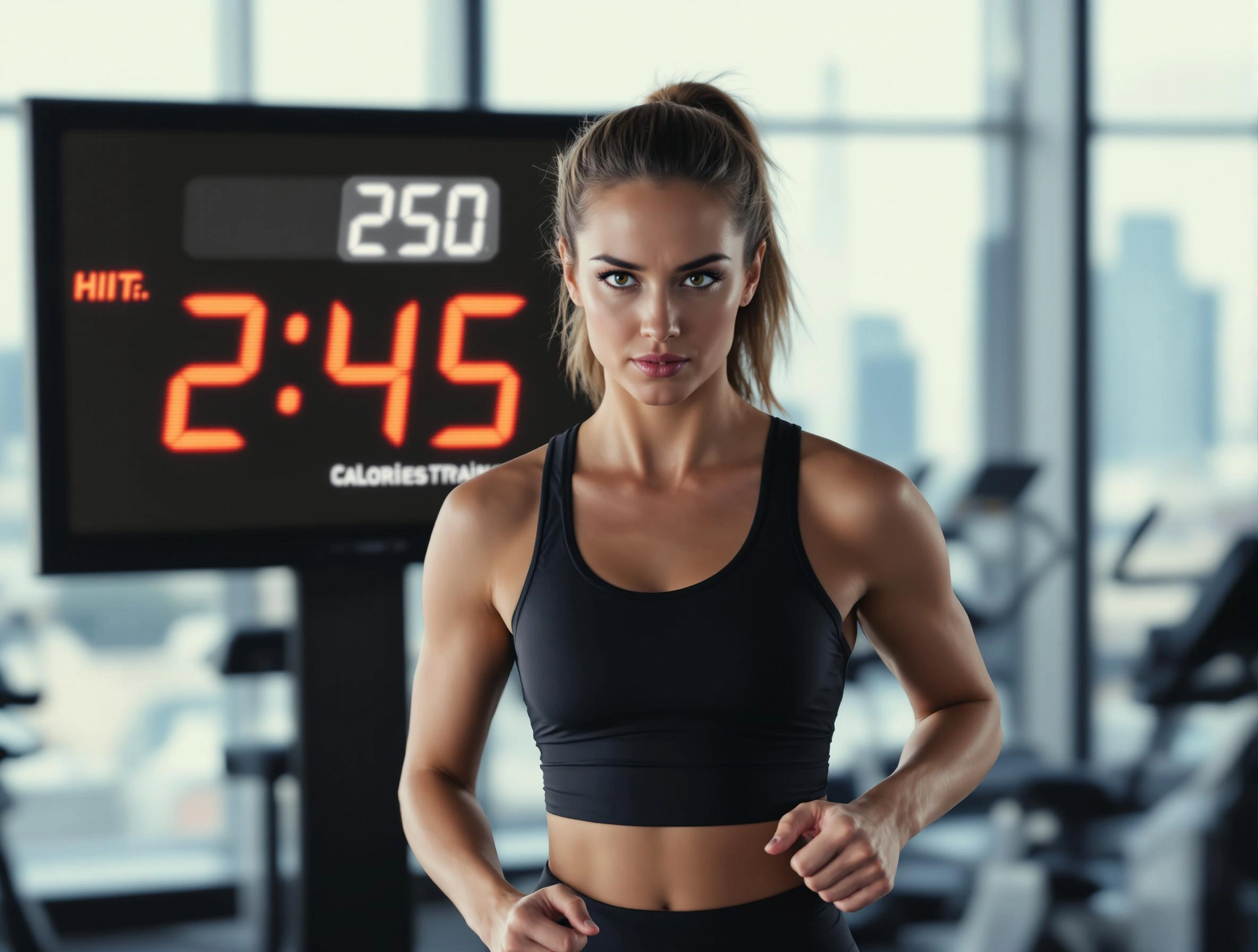HIIT and Bodyweight Exercises: How to Build an Effective Routine for Burning Calories at Home
Introduction
In a world where time is a precious commodity and access to gyms can be limited, finding an efficient and effective way to stay fit is more important than ever. High-Intensity Interval Training (HIIT) combined with bodyweight exercises offers a powerful solution for burning calories, building strength, and improving cardiovascular health—all without the need for equipment or a gym membership. Whether you’re a busy professional, a stay-at-home parent, or someone looking to maximize their workout efficiency, this article will guide you through creating a comprehensive HIIT and bodyweight exercise routine that can be performed anywhere, anytime.
This article will explore the science behind HIIT, the benefits of bodyweight exercises, and how to combine the two for maximum results. You’ll learn how to design a personalized routine, discover equipment-free exercises that target every major muscle group, and gain practical tips for staying motivated and tracking progress. By the end, you’ll have all the tools you need to build a sustainable, calorie-burning workout plan that fits seamlessly into your lifestyle.
The Science Behind HIIT: Why It Works
What is HIIT?
High-Intensity Interval Training (HIIT) is a workout strategy that alternates between short bursts of intense exercise and periods of lower-intensity recovery or rest. A typical HIIT session lasts between 10 to 30 minutes, making it an ideal option for those with limited time. The key to HIIT’s effectiveness lies in its ability to elevate your heart rate quickly and keep it elevated, leading to increased calorie burn both during and after the workout—a phenomenon known as excess post-exercise oxygen consumption (EPOC).
The Benefits of HIIT
- Efficient Calorie Burn: HIIT can burn more calories in less time compared to steady-state cardio.
- Improved Cardiovascular Health: HIIT has been shown to improve heart health, lower blood pressure, and increase VO2 max (a measure of aerobic fitness).
- Fat Loss and Muscle Retention: Unlike traditional cardio, HIIT helps preserve muscle mass while promoting fat loss.
- Metabolic Boost: The EPOC effect means your body continues to burn calories at an elevated rate for hours after your workout.
- Versatility: HIIT can be adapted to any fitness level and performed with or without equipment.
How HIIT Complements Bodyweight Exercises
Bodyweight exercises, which use your own weight as resistance, are a natural pairing for HIIT. They require no equipment, can be modified for all fitness levels, and engage multiple muscle groups simultaneously. When combined with HIIT, bodyweight exercises create a dynamic, full-body workout that maximizes calorie burn and builds functional strength.
The Benefits of Bodyweight Exercises
Why Choose Bodyweight Training?
Bodyweight exercises are a cornerstone of functional fitness, emphasizing movements that mimic real-life activities. They improve strength, flexibility, balance, and coordination, making them an excellent choice for overall fitness.
Key Advantages of Bodyweight Exercises
- Accessibility: No equipment or gym membership is required.
- Scalability: Exercises can be modified to suit beginners or advanced athletes.
- Full-Body Engagement: Many bodyweight exercises work multiple muscle groups at once.
- Improved Mobility: Bodyweight movements often involve a wide range of motion, enhancing flexibility and joint health.
- Cost-Effective: You can achieve a complete workout without investing in expensive equipment.
Examples of Effective Bodyweight Exercises
- Push-Ups: Targets the chest, shoulders, triceps, and core.
- Squats: Works the quads, hamstrings, glutes, and lower back.
- Planks: Strengthens the core, shoulders, and back.
- Burpees: A full-body exercise that combines strength and cardio.
- Lunges: Focuses on the legs and glutes while improving balance.
Designing Your HIIT and Bodyweight Routine
Step 1: Set Clear Goals
Before creating your routine, define your fitness goals. Are you looking to lose weight, build muscle, improve endurance, or simply stay active? Your goals will influence the structure and intensity of your workouts.
Step 2: Choose Your Exercises
Select a mix of bodyweight exercises that target different muscle groups. Aim for a balance of upper body, lower body, and core movements. For example:
- Upper Body: Push-ups, tricep dips, mountain climbers.
- Lower Body: Squats, lunges, jump squats.
- Core: Planks, Russian twists, leg raises.
Step 3: Determine Your Work-to-Rest Ratio
A common HIIT structure is a 2:1 ratio of work to rest. For example, perform 40 seconds of intense exercise followed by 20 seconds of rest. Beginners may start with a 1:1 ratio (e.g., 30 seconds work, 30 seconds rest) and gradually increase intensity as fitness improves.
Step 4: Plan Your Workout Duration
A typical HIIT session lasts 20-30 minutes, including warm-up and cool-down. Beginners may start with shorter sessions (10-15 minutes) and gradually increase duration as endurance builds.
Step 5: Warm-Up and Cool-Down
Always begin with a 5-10 minute warm-up to prepare your body for exercise and reduce the risk of injury. Dynamic stretches, light jogging in place, or jumping jacks are excellent options. Similarly, end your workout with a 5-10 minute cool-down, focusing on static stretches to improve flexibility and aid recovery.
Sample HIIT and Bodyweight Workout Routine
Warm-Up (5 Minutes)
- Jumping jacks: 1 minute
- Arm circles: 1 minute (30 seconds forward, 30 seconds backward)
- Bodyweight squats: 1 minute
- High knees: 1 minute
- Dynamic lunges: 1 minute
HIIT Circuit (20 Minutes)
Perform each exercise for 40 seconds, followed by 20 seconds of rest. Complete 4 rounds.
- Push-Ups: Focus on maintaining proper form.
- Squats: Keep your chest up and knees aligned with your toes.
- Mountain Climbers: Engage your core and move quickly.
- Plank Shoulder Taps: Alternate tapping each shoulder while keeping your hips stable.
- Burpees: Perform a full burpee with a jump at the top.
Cool-Down (5 Minutes)
- Child’s pose: 1 minute
- Hamstring stretch: 1 minute per leg
- Quad stretch: 1 minute per leg
- Cat-cow stretch: 1 minute
- Deep breathing: 1 minute
Practical Tips for Success
- Stay Consistent: Aim for 3-5 HIIT sessions per week, allowing at least one rest day between sessions for recovery.
- Track Your Progress: Keep a workout journal or use a fitness app to monitor your improvements.
- Focus on Form: Proper technique prevents injuries and ensures maximum effectiveness.
- Modify as Needed: Adjust exercises to match your fitness level. For example, perform knee push-ups if standard push-ups are too challenging.
- Stay Hydrated and Fuel Your Body: Drink water before, during, and after your workout, and eat a balanced diet to support your fitness goals.
Conclusion
HIIT and bodyweight exercises offer a powerful, equipment-free solution for burning calories, building strength, and improving overall fitness. By combining the efficiency of HIIT with the versatility of bodyweight movements, you can create a workout routine that fits seamlessly into your lifestyle and delivers measurable results. Whether you’re a beginner or an experienced athlete, the key to success lies in consistency, proper form, and gradual progression.
As you embark on your fitness journey, remember that small, consistent efforts yield significant long-term results. Start with a manageable routine, listen to your body, and celebrate your progress along the way. With dedication and the right approach, you can achieve your fitness goals and enjoy the countless benefits of a healthier, more active lifestyle—all from the comfort of your home.









Add comment